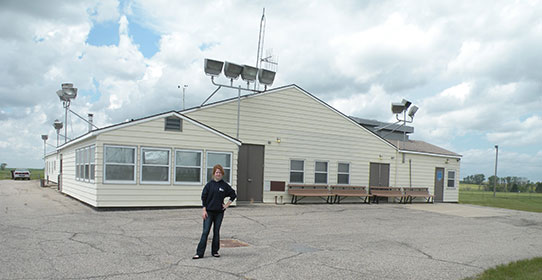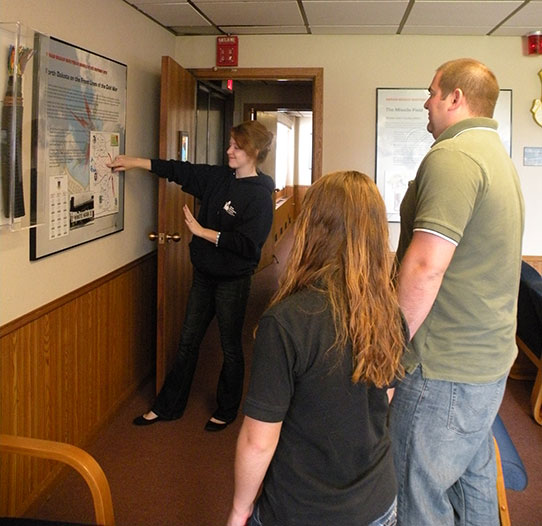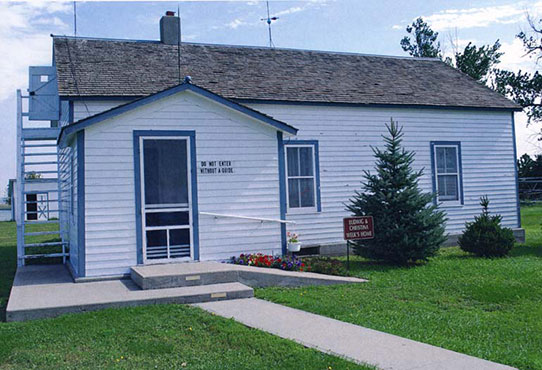From Pizza-Maker to Tour Guide
Going from pizza maker to tour guide was probably the most drastic job change I have made so far. I went from making pepperoni pizzas to speaking with guests from all over the world about nuclear missile launching procedures.
When I started working as an intern at the Ronald Reagan Minuteman Missile State Historic Site, which preserves a Cold War-era intercontinental missile launch site, I didn’t know what to expect. Before I saw the employment ad in the local paper, I had no idea this place existed. The first day on the job I drove up the driveway, past the rather intimidating gates with barbed wire, took a deep breath, and jumped head first into this strange new experience. I had no idea that when this site was active, it controlled 10 nuclear missiles, or that there was an underground launch control center five stories beneath the parking lot I had just driven over.

Standing outside the Ronald Reagan Minuteman Missile State Historic Site
If you have ever been on a tour somewhere in the U.S., I expect you have a pretty good picture in your head about what we, your tour guides, do. We dress in our uniforms, put a smile on our face, and lead visitors around our sites, educating hundreds of people. When I first started out as a tour guide, I had the same picture in my mind. As time progressed, I realized we are a lot more than friendly faces. We are comedians; we want our visitors to laugh and have fun, so we crack jokes. We are helping hands; I have helped more than one elderly person around the site by pushing them in a wheel chair. We are also friends and educators; at my site I sometimes get scared children who don’t like the elevator so I let them hold my hand as we go down. I lead lots of kids through our Youth Missileer Commander Program and include them in my tours as much as possible. I let them do everything from picking menu items in our kitchen to helping me open and close the elevator doors and having them take us below ground. I want the kids and teenagers to learn why this site was important.

Orientation Room at the Ronald Reagan Minuteman Missile State Historic Site
Being a tour guide also involves meeting and greeting people from all over the world. So far this summer, I have had people from India, England, Australia, Japan, South America, the Arctic Circle, France, Germany, Spain, and Italy! It’s an amazing experience when you get to share your culture and learn about theirs in return. It’s also a great learning experience when you talk about the different viewpoints on nuclear war with these visitors.
Along with all those roles, I also preserve and interpret history. Every year I come back to this site because I believe it is important to teach people about the Cold War and North Dakota's role in it; especially with all the nuclear weapon talks the United States is involved with right now. I don’t want the people who worked here to be forgotten; their jobs were critical to the success and defense of our nation during that tense U.S./Russia stalemate. As a tour guide, I am the one who takes older generations back to their “duck and cover” childhoods and I am the one who takes the current generation back in time for a history lesson.
Being a tour guide at the Ronald Reagan Minuteman Missile State Historic Site is not a job that I thought I would ever have. It is so unique and exciting! Check the blog in a few weeks, when I will give you more details about the site and what I do on a daily basis!


